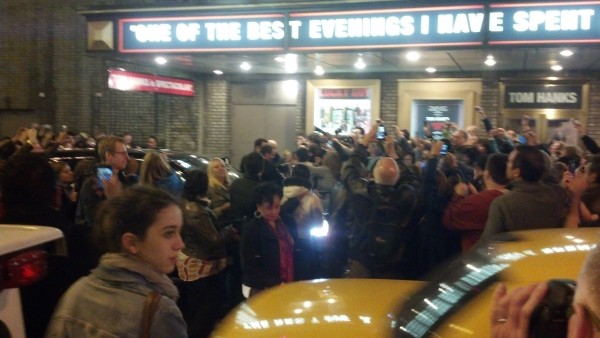
To do good writing, read good writing. Here’s the good writing I’ve been reading this week:
Backstage at ‘Lucky Guy,’ a character watches Tom Hanks keep the cast loose (New York Times) – This is a terrible headline for a very sweet behind-the-scenes piece on the late Nora Ephron’s last play, which starred Hanks, broke Broadway drama records and closed on July 3.
Woman’s work: A twisted reality of an Italian freelancer in Syria (Columbia Journalism Review) – Another bad headline for a terrific story. A better one would be “How to cover a war for $70 a story.” That’s how much former human rights officer turned freelance journalist Francesca Borri makes per piece writing for Italian media despite working in brutal and sometimes terrifying conditions.
New York Times blogger demanded travel and expenses from companies (Gawker) – A consultant to fast-growth companies who also blogs about the same subject for the Times‘ “You’re the Boss” blog asks PR firms for thousands of dollars to cover travel and expenses to visit their clients. He claims the expenses are legit and he’s never promised that a visit means he’ll write about any of the companies in the blog, but the PR firms say otherwise. So far, the paper’s backing him up. Who’s right? Doesn’t matter. Don’t be this guy.
How I created a tiny niche blog that earns six figures (Write to Done) – Freelance business writer Carol Tice dove into the information products business in a big way, with a big payoff. Tice — who I’ve worked with before and know to be a smart cookie — used her freelance writing blog to launch paid products — recorded training courses, a members-only forum where writers could learn about their craft, etc. You go girl!
What book reader species are you? (Visual.ly) – This infographic that categorizes readers as Compulsives, Free Range, Prestige and other types. Which one are you?
Portland, Oregon: The age of a city (Lab Rat Revenge) – A stunning visual representation of the age of the buildings in the greater Portland metro area. I don’t know who Justin is or how he did this, but it’s a remarkable example of data telling a story. The map is color coded by year, with buildings erected each decade from 1890 to 2010 are shown in a different color.
Twitter now suggests hashtags as you compose a tweet (mediabistro)